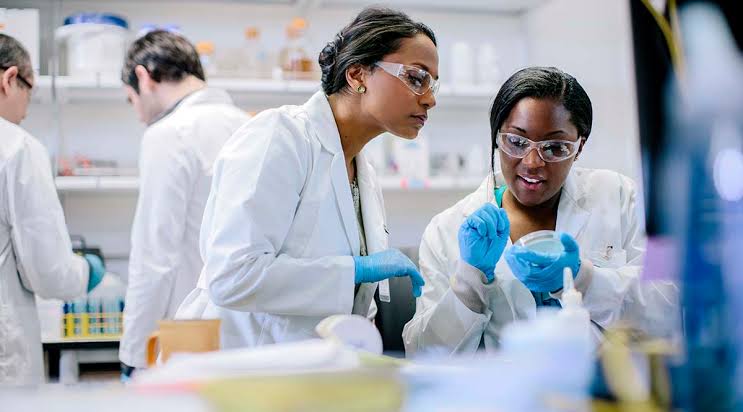
Definition of Biostatistics
Biostatistics is a branch of statistics that applies statistical methods to the analysis of biological and health-related data. It encompasses a wide range of applications, including the design of biological experiments, clinical trials, epidemiological studies, and public health research. Biostatisticians utilize various statistical techniques to collect, analyze, interpret, and present data in a way that informs decision-making in health sciences.
Importance of Biostatistics in Conducting Research
- Study Design: One of the primary roles of biostatistics is in the design phase of research studies. Proper study design is crucial for ensuring that the research question can be answered effectively. Biostatisticians help determine sample sizes, select appropriate control groups, and decide on randomization methods to minimize bias. For instance, in clinical trials, they ensure that the trial is adequately powered to detect a meaningful effect if one exists.
- Data Collection: Biostatistics plays a vital role in developing protocols for data collection. This includes determining what data needs to be collected and how it should be measured. Accurate data collection methods are essential for producing reliable results. Biostatisticians often work with researchers to create surveys or experimental designs that yield valid and reproducible data.
- Data Analysis: Once data has been collected, biostatistics provides the tools necessary for analyzing this information. This involves using statistical tests to evaluate hypotheses and draw conclusions from the data. Common techniques include regression analysis, survival analysis, and hypothesis testing. The choice of statistical method depends on the type of data collected and the specific research questions being addressed.
- Interpretation of Results: After analysis, biostatisticians assist researchers in interpreting their findings accurately. This includes understanding confidence intervals, p-values, and other statistical metrics that indicate the strength and significance of results. Proper interpretation is critical as it influences public health recommendations and policy decisions.
- Communication: Effective communication of research findings is another key aspect where biostatistics contributes significantly. Biostatisticians help translate complex statistical results into understandable formats for diverse audiences including policymakers, healthcare providers, and the general public. This may involve creating visual representations such as graphs or charts that clearly convey important information.
- Public Health Implications: In public health research specifically, biostatistics helps identify trends in disease incidence or prevalence within populations over time or across different demographics. By analyzing this data, researchers can inform interventions aimed at improving health outcomes or controlling disease outbreaks.
- Ethical Considerations: Ethical issues are also paramount in biostatistical research; biostatisticians must ensure that studies are designed ethically and that participant confidentiality is maintained throughout all phases of research.
In summary, biostatistics serves as an essential foundation for conducting rigorous scientific research in biology and health fields by providing methodologies for study design, data collection and analysis, interpretation of results, effective communication of findings, understanding public health implications, and addressing ethical considerations.
Applications of Biostatistics in the Medical Field and Other Fields
Biostatistics is a branch of statistics that applies statistical methods to biological, health, and medical research. It plays a crucial role in designing studies, analyzing data, and interpreting results across various fields. Below are detailed applications of biostatistics in both the medical field and other domains.
1. Applications in the Medical Field
a. Clinical Trials
One of the most significant applications of biostatistics is in clinical trials, which are essential for evaluating new treatments or drugs. Biostatisticians design trials to ensure they are statistically valid and can provide reliable results. For example, during the development of a new cancer drug, biostatisticians determine sample sizes, randomization methods, and endpoints to assess efficacy and safety. They analyze data using techniques such as survival analysis to compare outcomes between treatment groups.
b. Epidemiology
Biostatistics is fundamental in epidemiology for understanding disease patterns and risk factors within populations. For instance, during an outbreak of a communicable disease like COVID-19, biostatisticians use statistical models to estimate transmission rates, identify at-risk populations, and evaluate the effectiveness of interventions (e.g., vaccination campaigns). They apply techniques such as logistic regression to analyze how various factors contribute to disease incidence.
c. Public Health Research
In public health research, biostatistics helps assess health trends and inform policy decisions. For example, researchers might use biostatistical methods to analyze data from national health surveys to understand obesity prevalence across different demographics. This analysis can guide public health initiatives aimed at reducing obesity rates through targeted interventions.
d. Genetic Studies
Biostatistics also plays a critical role in genetic research by analyzing data from genome-wide association studies (GWAS). These studies investigate the relationship between genetic variations and diseases. Biostatisticians employ complex statistical models to identify significant associations between specific genes and conditions like diabetes or heart disease.
2. Applications in Other Fields
a. Environmental Science
In environmental science, biostatistics is used to analyze ecological data and assess the impact of environmental changes on biodiversity. For example, researchers may use statistical models to evaluate how pollution levels affect fish populations in a river ecosystem. By applying techniques such as multivariate analysis, they can identify key factors influencing species diversity.
b. Agriculture
Biostatistical methods are applied in agriculture for crop yield analysis and experimental design in agricultural research. Researchers may conduct experiments comparing different fertilizers or pest control methods while using biostatistical tools like ANOVA (Analysis of Variance) to determine which treatments lead to significantly higher yields.
c. Social Sciences
In social sciences, biostatistics aids in survey design and analysis related to health behaviors or social determinants of health. For instance, researchers might conduct surveys on smoking habits among teenagers and use regression analysis to explore correlations with socioeconomic status or access to education.
d. Pharmaceutical Industry
The pharmaceutical industry relies heavily on biostatistics for drug development processes beyond clinical trials—such as pharmacokinetics studies that examine how drugs move through the body over time. Biostatisticians model these processes using differential equations that help predict drug behavior based on various patient characteristics.
In summary, biostatistics serves as an essential tool across multiple disciplines by providing methodologies for study design, data analysis, interpretation of results, and ultimately guiding decision-making processes based on empirical evidence.
How a Biostatistician Works with Physicians and Other Scientists
Biostatisticians play a crucial role in the intersection of data analysis and scientific research, particularly in fields such as medicine, public health, and biology. Their collaboration with physicians and other scientists is essential for designing studies, analyzing data, and interpreting results. Here’s a detailed breakdown of how biostatisticians work alongside these professionals:
1. Study Design
One of the primary responsibilities of biostatisticians is to assist in the design of scientific studies. This involves:
- Defining Research Questions: Biostatisticians help clarify the specific questions that need to be answered through research. They ensure that these questions are measurable and statistically relevant.
- Choosing Appropriate Methodologies: They recommend suitable study designs (e.g., randomized controlled trials, cohort studies) based on the research objectives and the nature of the data.
- Sample Size Calculation: Biostatisticians perform power calculations to determine the necessary sample size needed to detect an effect if one exists. This ensures that studies are adequately powered to yield reliable results.
2. Data Collection Planning
Once a study is designed, biostatisticians collaborate with scientists to develop protocols for data collection:
- Data Collection Instruments: They assist in creating surveys or questionnaires that accurately capture the required information while minimizing bias.
- Training Research Staff: Biostatisticians may train staff on proper data collection techniques to ensure consistency and reliability across different sites or teams.
3. Data Analysis
After data collection, biostatisticians take charge of analyzing the data:
- Statistical Methods Application: They apply appropriate statistical techniques to analyze the collected data, which may include regression analysis, survival analysis, or Bayesian methods depending on the study’s needs.
- Interpreting Results: Biostatisticians interpret statistical outputs and translate them into meaningful conclusions that can inform clinical decisions or further research.
4. Collaboration with Scientists
Biostatisticians work closely with physicians and other scientists throughout all stages of research:
- Regular Communication: They maintain ongoing dialogue with researchers to ensure alignment on study goals and methodologies.
- Problem-Solving Together: When unexpected issues arise during data collection or analysis, biostatisticians collaborate with scientists to troubleshoot problems effectively.
5. Reporting Findings
Finally, biostatisticians play a key role in disseminating research findings:
- Writing Reports and Publications: They often co-author scientific papers where they present statistical analyses clearly and concisely for publication in peer-reviewed journals.
- Presenting at Conferences: Biostatisticians frequently present findings at conferences, explaining complex statistical concepts in an accessible manner for diverse audiences including clinicians and policymakers.
6. Continuous Education
Biostatistics is an evolving field; therefore, biostatisticians also engage in continuous learning:
- Staying Updated on Statistical Methods: They keep abreast of new statistical techniques and software that can enhance their analytical capabilities.
- Participating in Interdisciplinary Training: By attending workshops or seminars alongside physicians and other scientists, they foster a better understanding of each other’s disciplines which improves collaboration efficiency.
In summary, biostatisticians serve as vital partners to physicians and other scientists by providing expertise in study design, data analysis, interpretation of results, and effective communication of findings. Their ability to bridge gaps between statistics and scientific





